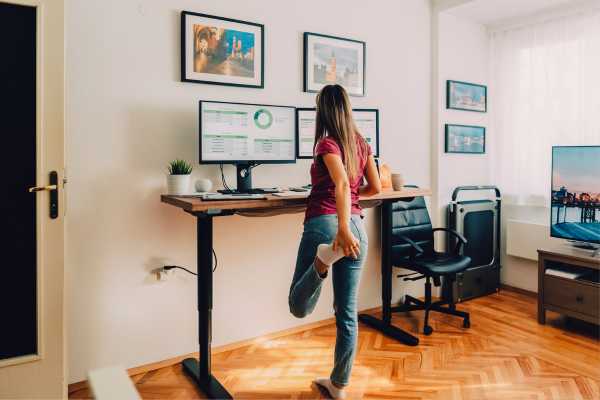Deciding on the optimal Where To Place Desk In the Bedroom can significantly influence both productivity and the overall ambiance of the space. With considerations ranging from natural light to ergonomic comfort, the placement it is key to creating an effective workspace within the privacy of a bedroom. Let’s explore some strategic options for placement to maximize benefits.
Near a Window

Placing a desk near a window takes advantage of natural light, which has been shown to boost mood and enhance focus. The view outside can also provide a refreshing break for the eyes, especially important during long periods of work or study. However, it’s essential to position it in a way that minimizes glare on the computer screen, possibly by situating it perpendicular to the window or using window treatments to control light levels throughout the day.
Against a Wall

Positioning against a wall can help maximize the usable space within the bedroom, especially in smaller rooms. This setup encourages a clear, defined workspace that’s separate from the rest of the room’s activities, minimizing distractions. It also provides an opportunity to utilize wall space above the desk for shelving or bulletin boards, further enhancing organization and efficiency.
Avoid Blocking Outlets

Deciding where to place a desk, it’s crucial to consider the accessibility of power outlets. Blocking outlets with furniture can be not only inconvenient but also a potential safety hazard due to overextension of cords. Ensure it is positioned to allow easy access to outlets for computer equipment, chargers, and any other necessary devices, thereby maintaining a safe and functional workspace.
Consider Ergonomics

Ergonomics plays a vital role in placement. The desk and chair should be positioned to promote a comfortable posture, with the computer monitor at eye level and the keyboard at a height that allows the arms to rest comfortably. Adequate legroom and the ability to adjust chair and desk heights are important factors to consider, ensuring the workspace is conducive to long periods of use without causing strain or discomfort.
Space Constraints

In bedrooms where space is at a premium, the placement of a desk requires creative thinking. Utilizing corners or underutilized spaces can be an effective way to incorporate a workspace without compromising the room’s other functions. For example, a floating desk or a slimline design can maximize floor space while providing a sufficient work area. The key is to assess the room’s layout carefully and identify potential spots where can fit seamlessly without cluttering the room.
Privacy

Privacy is another crucial consideration, especially for those sharing living spaces with others. Placing the desk in a corner facing away from the bedroom entrance can offer a sense of seclusion, minimizing distractions. This setup allows for concentration on work or study, making it easier to separate work time from relaxation time within the same room. Additionally, using room dividers or strategically placed bookshelves can enhance privacy and help define the workspace as a separate zone.
Personal Preference

Personal preference plays a significant role in deciding where to place. Some may prefer a window view for natural light and inspiration, while others might find a wall-facing less distracting. The choice often depends on what environment one finds most productive and comforting. It’s important to consider how it placement aligns with your daily routines and how it can enhance your productivity and mood.
Conclusion
Determining where to place a desk in a bedroom involves balancing practical considerations with personal needs and preferences. Space constraints and the need for privacy are significant factors, but ultimately, the decision should reflect what makes the individual feel most comfortable and productive. By thoughtfully considering these aspects, one can create a workspace that not only fits physically within the bedroom but also suits their lifestyle and enhances their day-to-day living.
